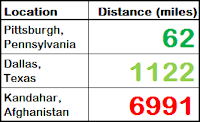For this week’s electronic literature focus piece, we have chosen The Sweet Old Etcetera. A highly interactive, sound-based poem displayed in an engaging and playful manner. Author Alison Clifford incorporates work from poet Edward Estlin Cummings, E.E. for short, in a way that grabs the reader's attention. There are several layers to the format; however, the interactive components are found in the foreground, making it easy for the reader to locate them. This allows the reader to put more emphasis and thought into the content of the poem, rather than the flashy artwork. Although, it is also important to mention that the reader adds layers to the picture as they progress through the poem. This three-dimensional aspect helps bring character and life to the poem, which compliments the digital nature of this work.
 The reader’s primary interaction with the work is through the swaying tree visible at the start. The reader is free to explore whatever section of the work they choose by clicking on a tree branch. This type of interactivity allows the reader to stay engaged in the poem, while exposing them to the various sights and sounds of the work. After the reader goes through a part of the poem an additional element of artwork is added in the form of ground, hills, sky, or clouds. Clicking and repeating the process allows the story and picture to grow, ultimately creating a beautiful poem and illustration.
The reader’s primary interaction with the work is through the swaying tree visible at the start. The reader is free to explore whatever section of the work they choose by clicking on a tree branch. This type of interactivity allows the reader to stay engaged in the poem, while exposing them to the various sights and sounds of the work. After the reader goes through a part of the poem an additional element of artwork is added in the form of ground, hills, sky, or clouds. Clicking and repeating the process allows the story and picture to grow, ultimately creating a beautiful poem and illustration.
This format is definitely a hybrid, and the integration of poetry into a virtual landscape fits well in a literary sense. The story will not proceed without interactor input, but the segment of the story currently inhabited will remain active. There is a pleasant balance between interactivity and ambient animation, such as the tone-producing flowers near the tree. The animations of wind, flowers, birds, and the tree bring about a sort of natural life to the virtual space. Sound is also an important digital element to the perception of this piece. It is present only during interactions, bringing another quality of electronic literature.
 The branches of the swaying tree can be explored in a nonlinear fashion. Different segments of the poem are revealed by the interactor. Pieces fall as they are called, and then float off as they are clicked away. The animation of the text coming and going also reinforces the poetry. For example, lines regarding falling leaves seem to waft down into place, and then fall and fade away. The letters of a scrambled version of the word “grasshopper”, make short jumps onto and off of the page.
The branches of the swaying tree can be explored in a nonlinear fashion. Different segments of the poem are revealed by the interactor. Pieces fall as they are called, and then float off as they are clicked away. The animation of the text coming and going also reinforces the poetry. For example, lines regarding falling leaves seem to waft down into place, and then fall and fade away. The letters of a scrambled version of the word “grasshopper”, make short jumps onto and off of the page.
Our only question: who wrote this poem? Was it E.E. Cummings himself? Was it us, as the reader, interacting with the words and phrases? Could it be the author, responsible for its code? The software itself? It seems the poetry itself is owed to Cummings, while the interactive display, enriching animations, and unpredictable order construct a unique character whose source is a mixture of them all.




